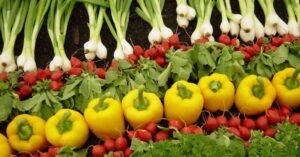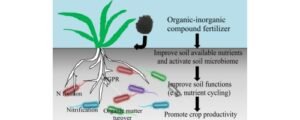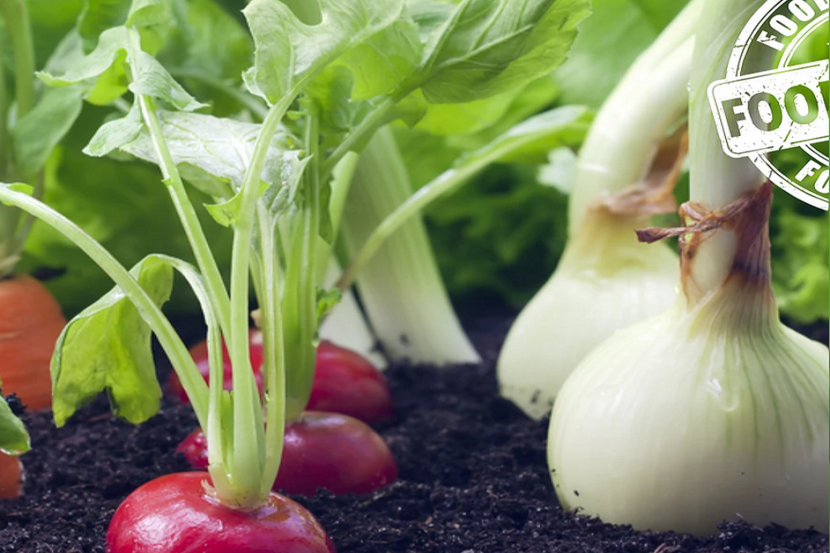Latest update on Organic Farming of Vegetables
Unbalanced and inadequate nutritional management over many years in which organic sources of nutrients are generally lacking is mainly responsible for the decline in the fertility of the land and its productivity. The use of chemical fertilizers is not able to maintain the fertility of the land and the capacity of crop production for a long time. Whereas organic farming technology is not only able to maintain the fertility of the land and the production capacity of the crop for a long time it can change the physicochemical and biological properties of the soil in a friendly way.

By that process of farming there is no shortage of secondary and micronutrient nutrients. Organic farming technology should be given more importance keeping in view the increasing price of fertilizers at the national level and the increasing gap between demand and supply.
Organic farming techniques include organic manure whether it is pulse crop, residues of green manure crop, compost of bacteria or nutrition management by vermi compost and organic control of pests and diseases, water management, livestock management and farmers participation.
Organic nutrition management
Use of Organic Manures: Use of organic manures Use of organic manure is essential for adequate availability of organic matter in the soil. Organic manures have beneficial effect on the physical structure and chemical and biological properties of the soil.
You should know that by the use of one ton of cow dung in rural compost gives 5 to 8 kg of Nitrogen, 3-5 kg of Phosphorus, 5 to 6 kg of Potash, the amount of essential nutrients in urban compost is slightly higher.
By using cake of 1 ton karanj, castor, groundnut, coconut, seasame etc., 30 to 70 kg of nitrogen is obtained, 8 to 20 kg of phosphorus and 10 to 20 of potash can be easily reach in our soils.
Use of pulse crops
Pulses can be mixed with vegetables Manly Pulses can be grown as inter-cropping with vegetables. Incorporation of pulse crops has shown encouraging growth in the yield of vegetables and stability in the yield of such crops. Growing gives the benefit of non-metal compounding done by them, pulse crops like cowpea, soybean etc., get profit at the rate of 40 kg per hectare in the form of compounded nitrogen
Therefore, after 40 to 45 days from sowing, plowing should be done by turning green manure, after this, according to the additional forest farming system, its leaves can be used as green manure by applying Giripushpa and Subbul. By the application of 1 ton of Gliricida green leaves contains it privides 30 to 40 kg Nitrogen 3:00 to 3:30 kg Phosphorus 15 to 25 kg Potash in our farm land.
The use of bacterial fertilizers
The use of bacterial fertilizers Some bacteria living in or around the roots of plants add nitrogen from the atmosphere or make available and soluble phosphorus in the soil useful for the plants. Thus makes an active contribution in increasing the growth and yield of plants. At the same time they also maintain the fertility of the land they are given in the form of bacterial fertilizers in the crops.

Nitrogen-providing bacteria present in the soil convert the nitrogen gas available in the environment into ammonia and make it easily available to the plants. To increase the availability of nitrogen in pulses species like cowpea, pea seed, etc., Rhizobium bacterial fertilizer should be used. With the use of bacterial fertilizers and Azospirillum to increase the availability of nitrogen in soils for all crops.
Phosphorus-providing bacterial fertilizers contain bacteria that convert the insoluble form present in the soil into a soluble form, so that plants can easily use it as their food and convert it into a soluble form, so that plants can easily absorb it. The bacterial fertilizers that make them soluble, they are able to use as their food, are available in the market under the name phosphobacteria and phosphatica.
Methods of using different bacterial fertilizers
Treating seeds and tubers with bacterial fertilizer
In seed treatment method after boiling 250 grams in 1 liter of water after cooling 500 grams of bacterial fertilizer and enough seed for 1 hectare should be sown after drying it in a shady place for half an hour.
It is necessary to save the bacterial culture from sunlight. For tuber plant treatment 2 kg of culture should be mixed thoroughly in 5 liters of water enough tuber for one hectare should be treated in it and after drying in a shady place for half an hour the medicine should be done for soil treatment.

For soil treatment 2 Kilogram culture 25 kg of cow dung mixed well with 25 kg of soil cover it with soaked jute sacks keep it in a shady place and turn it twice at an interval of 5 days. After 15 days evenly spread the above mixture your one hectare of your farm. Distribution of this process is called charging while using manures we do not use any kind of fertilizers and chemical drugs.
Earthworm manure is used it is a high-quality balanced organic manure prepared by earthworms. It contains addition to nitrogen, phosphorus and potash all the nutrients and enzymes are available which are necessary for plants for soil fertility. It also enhances the water holding capacity of the soil. Before seed sowing at the rate of 20 to 30 quintals per hectare vermi compost should be mixed in the soil. After the use of this fertilizer the surface of the farm cover with leaves or by giving any kind of mulching. Fertilizers and chemical drugs should not be used while using it.

Management of pests and diseases by the process of biological control of diseases is a simple and effective method. But along with the management of excessive use of chemical drugs there are many new problems for agricultural systems such as creating resistance to pesticides, pollution of the environment, ground water. The amount of chemical drug residues in agricultural products has a bad effect on human health, reduction in the number of natural sources of crop insects, reduction in the storage capacity of crops is prominent.
Disease control can be reduced by the following main methods:
- Soil irradiation for healthy plant production and prevention of viral diseases by use of nylon netting
- Use of representative plants
- Using karanj and neem blanks in the field
- Catching insects by pheromone trap
- Prevention of diseases caused by natural enemies
- To reduce the problem of disease by using vegetable substances like lantana, neem, basil leaves
- Using crops such as mustard and marigold in between the crops
Important biological pest and disease killer
Trichoderma & Pseudomonas: It is an organic fungicide. It has been found to be effective in diseases caused by fungal diseases like potato, turmeric, ginger, onion, garlic, etc., root rot, stem rot, scorch, etc., as well as it has been found suitable for bacterial wither disease of tomato and eggplant. Seed treatment can be done with fungicides. For seed treatment you can use 2 to 4 g of per kg of seed and go for germination of the seed. To use Trichoderma in the field mix one kilogram of Trichoderma well in a tractor-rotted manure and cover with jute sacks.

During summer Keep in mind that 20% moisture remains in it either by pressing it with gunny bags or with paper. In summer it can be covered with polythene or keep in mind that a little moisture remains approx. 20% and the temperature should not reach more than 50 degrees.
Bassilus Thurinjensis: It is known as BT in short that it controls disease on Cauliflower and Cabbage and it should be sprayed at an interval of 15 days by dissolving 500 to 1000 grams of culture per hectare in 650 liters of water.
Trichogramma : It is based on small wasps which are parasites of moth eggs. Its 8 to 12 cards per hectare are applied three to four times at an interval of 10 to 15 days in the evening of the crop. Biological nematode It is made from fungus which grows in the ground and controls it by feeding on worm eggs and sometimes female nematode in vegetable crops at the time of sowing or immediately after it. You make it at the rate of 50 kg per hectare around the plants. If there is no moisture in the field then water should be arranged soon. For nursery use 20 grams of it in 1 square meter.
Byuveria Besiana: It is a fungicide based organic insecticide which controls insects like green caterpillar, diamond back moth, white fly, mahu leaf miner etc by spreading disease.




